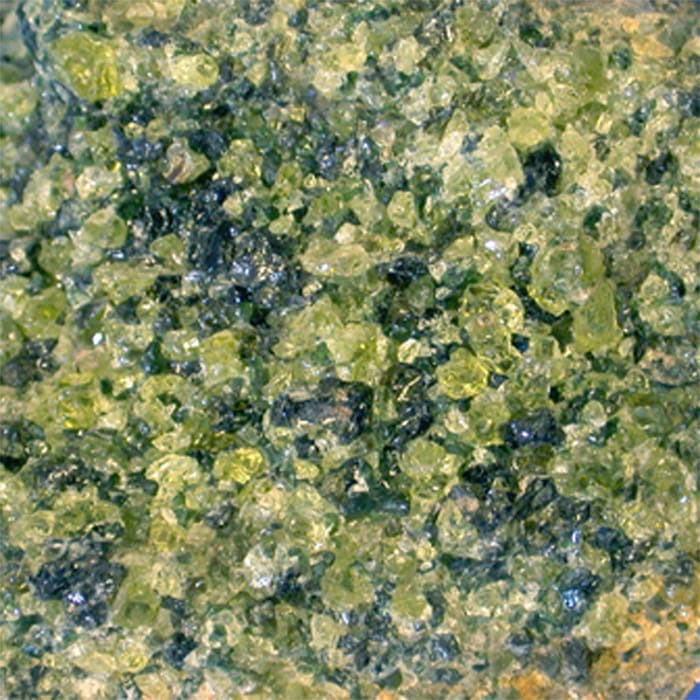Group: Silicates – nesosilicates
Chemical composition: (Mg,Fe2)SiO4
Colors: Green, yellow, brown, white or black
Hardness: 6.5 to 7
Formation: Orthorhombic crystal; tabular, massive or granular form
Principal Sources: Common in earth’s upper mantle and one of the most abundant minerals on the planet.
Special Notes: Olivine and its high pressure structural variants constitute over 50% of the Earth’s upper mantle, and olivine is one of the Earth’s most common minerals by volume. However, olivine weathers quickly on the surface. Olivine is named for its typically olive-green color (thought to be a result of traces of nickel), though it may alter to a reddish color from the oxidation of iron. Translucent olivine is sometimes used as a gemstone called peridot, the French word for olivine. Olivine has also been identified in meteorites, the Moon, Mars, in the dust of comets and on asteroids.

